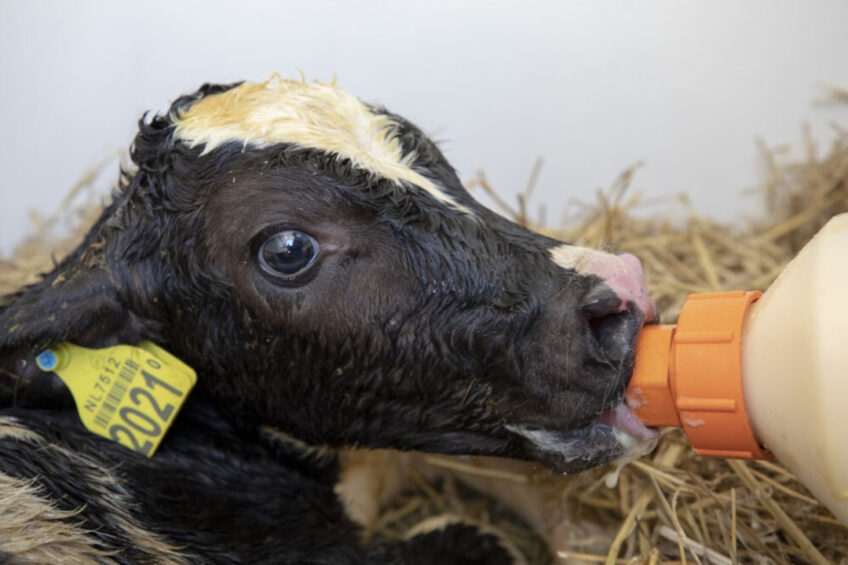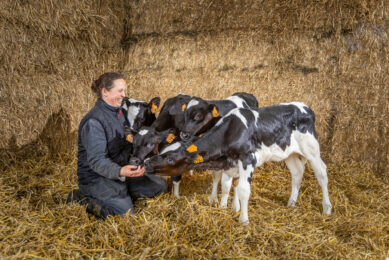Calf health: Get colostrum management right

Colostrum management is a vital part of good calf husbandry and sets heifers up for a healthy and productive life.
By reaching growth targets, heifers are more likely to calve at 24 months, which is associated with higher profitability and longevity. Instigating a robust colostrum policy is therefore the first step in setting heifers up for a long and productive life, resulting in top herd performance.
In the past, the National Farmers’ Union argues, farmers have relied on the colour of colostrum to gauge its quality and assumed that a calf suckling its mother will have taken in sufficient quality. Neither is an accurate measurement of colostrum intake or quality. To ensure that calves receive adequate colostrum for optimal growth and health, it is important that all farms have a management policy in place.
Antibodies
The ability of calves to absorb antibodies from colostrum reduces rapidly after birth. Although the legal requirements is to provide colostrum within 6 hours, the ability to absorb antibodies will decline after just 120 minutes.
Colostrum should be fed at 38°C, which can be done by warming it in a bath of 50°C until the colostrum has reached 40-42°C. It is important not to overheat it as this will denature the antibodies.
Bacterial contamination reduces the quality of colostrum and also puts calves at risk of disease. Bacterial counts in warm colostrum can double every 20 minutes. This is another reason why colostrum should be fed quickly and stored in a cool place if not immediately fed. Colostrum should always be handled as hygienically as possible.
While colostrum quality can be measured at home, determining the success of colostrum management can be done through blood sampling to measure passive transfer of antibodies. This can be arranged through your vet. They will also be able to give advice on management, if the results show calves are not receiving adequate colostrum.
Colostrum management
Jess Langton, NFU dairy board member, said: “Giving calves the best start in life, whether for heifer replacements or for calves that will go on to be reared for the beef supply chain, is absolutely crucial and colostrum management is clearly central to this.
“Dairy farmers constantly strive to get the best from their herd and ensure its future sustainability, as well as that of our industry. Through good colostrum management, we are essentially making an investment into the robustness of our dairy herd. But we are also investing in ensuring that we are producing calves that the market wants and that the rearer of finishers will be able to make a profit from – thus benefitting the whole supply chain,” she added.
The NFU is a firm supporter of the 3 Qs of colostrum management
• Quality – Only colostrum containing a minimum of 50g/l of immunoglobulins should be fed to newborn calves. There is evidence that vaccinations carried out in the dry period can also improve immunoglobulin concentration.
• Quantity – Calves should receive 3 litres or 10% of their bodyweight (whichever is higher), which can result in a 4-litre recommendation for some Holsteins. Where the quantity is high, the feed ca be split in 2 and followed by a similarly sized feed within 12 hours of birth.
• Quickly – After calving, quality reduces both in and out of the udder. It is imperative that colostrum is collected from the cows as swiftly as possible, and then fed to the calf very quickly.
Join 13,000+ subscribers
Subscribe to our newsletter to stay updated about all the need-to-know content in the dairy sector, two times a week.










